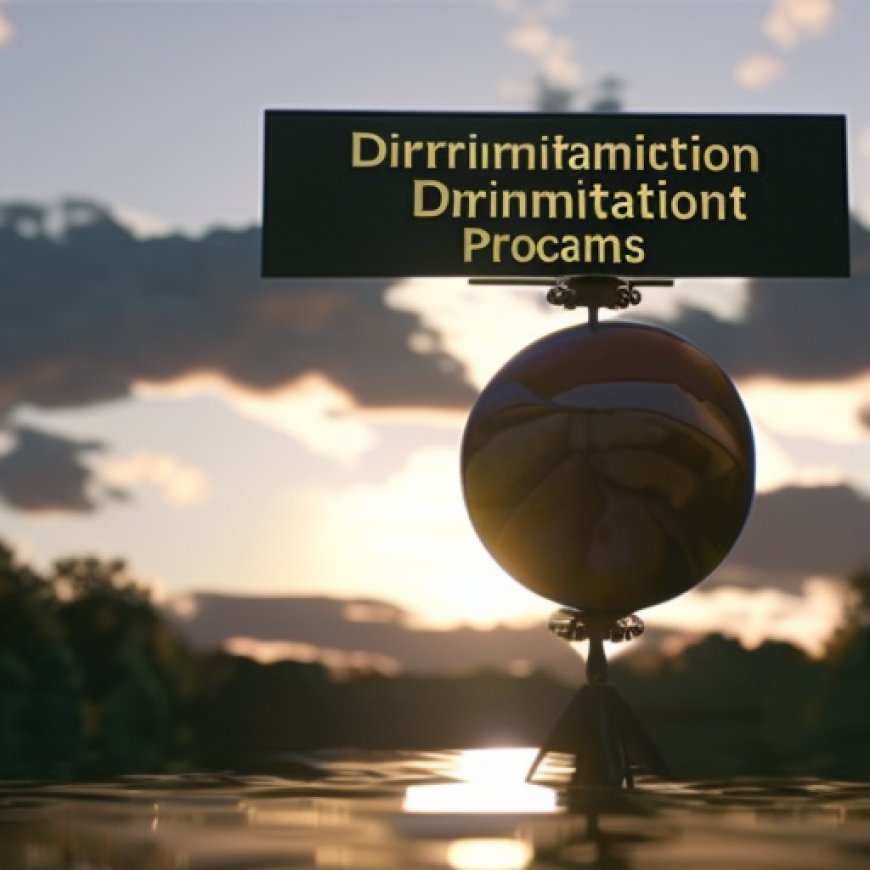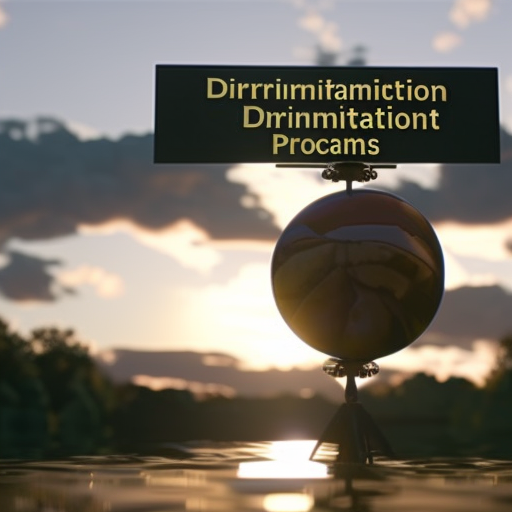USDA Discrimination Financial Assistance Program
USDA Discrimination Financial Assistance Program National Sustainable Agriculture Coalition


USDA Discrimination Financial Assistance Program
On July 7, 2023, the United States Department of Agriculture (USDA) announced the opening of the USDA Discrimination Financial Assistance Program. This Program was authorized by Section 22007 of the Inflation Reduction Act of 2022 (IRA). The IRA called for USDA to create a program that makes 2.2 billion dollars available for “discrimination financial assistance” for farmers who can show that they “experienced discrimination” in USDA Farm Loan Programs.
The Farmers’ Legal Action Group has published a Brief Farmers’ Guide to USDA Discrimination Financial Assistance Program; this post outlines key information also available in the free guide.
When is the Deadline to Apply? October 31, 2023
Farmers, ranchers, and landowners who wish to take part in the Program must apply.
The deadline to apply is October 31, 2023. Because the application is long, and requires detailed information and documents, farmers should start working on the application right away.
Payments will be divided between all farmers who apply and are found eligible. In other words, this is NOT a first-come, first-serve program.
Who is Eligible?
Farmers, ranchers, and landowners can be eligible for this Program. To keep things short, this post refers to farmers. In general, there are two ways that a farmer can be eligible: (1) the farmer has personally experienced discrimination by USDA in a Farm Loan Program; or (2) the farmer has an assigned or assumed USDA farm loan and the original borrower experienced discrimination on that same debt.
For farmers who experienced discrimination themselves, the discrimination must have occurred before January 1, 2021. The discrimination must have been by USDA, and it must have been related to a USDA Farm Loan Program. For example, USDA could have discriminated against a farmer who applied for a direct or guaranteed farm loan. With guaranteed loans, however, the discrimination must have been by USDA and not the private lender. It is also possible to participate in the Program if the farmer attempted to apply for a farm loan and to farm, but the discrimination prevented the farmer from doing so.
For farmers who have assigned or assumed loans, the same loan must have been the subject of discrimination.
Importantly, no estate claims are eligible. In other words, if a farmer experienced USDA discrimination on a loan in 2015, and that farmer passed away in 2020, that farmer’s estate or the farmer’s heirs may not apply for this Program on the farmer’s behalf. The sole exception to this rule concerns loans that were assigned or assumed, as explained above.
What Counts as Discrimination?
To be eligible for this Program, farmers must be determined to have experienced discrimination. Discrimination occurs when a person has been treated differently from others for a covered, illegitimate reason.
For this Program, it is discrimination if people have been treated differently based on their race, color, national origin or ethnicity, sex, sexual orientation, gender identity, religion, age, marital status, disability, and reprisal or retaliation for prior civil rights activity. USDA says tribal membership is also an accepted discrimination basis for this Program.
This Program does not require “smoking gun” proof of intentional discrimination, for example, in the form of an insult or a statement that certain people will not get loans. Instead, discrimination can be shown if an eligible person is treated differently than someone else based or race, national origin, sex, and so forth.
When applying, it can be helpful to note that the treatment the farmer received violated USDA’s own rules. This shows that others received different treatment by USDA. Similarly, if the farmer knows that other people received different, more favorable, treatment, that information should be noted. This sort of comparison is not required, but it can be useful.
How Do Farmers Apply?
Applications can be submitted online, in person, and by mail. The application will feel long and requires that farmers provide several documents and other important information about the farmer, the farm, the loan, and more.
The application is available in English and Spanish. For applications in a different language, USDA is encouraging farmers to contact the Program Call Center at 1-800-721-0970, or email info@22007apply.gov.
- To apply online, a farmer can use the Program’s e-filing system.
- To apply by mail, a farmer can mail a paper copy of the application to the farmer’s closest Program Regional Office.
- To apply in person, the farmer can drop off the application at one of the Program’s In-Person Regional Offices.
Additional information about applying — whether online, by mail, or in person — can be found on the Program’s website.
What Documentation is Needed?
A number of documents are required when applying. These required documents are essential and must be submitted. Nearly as important, however, are documents that are not absolutely required. As the Program application points out, several important aspects of the farmer’s story can be supported by additional documents that—even if not strictly required—can be very useful to include.
The farmer may not have precise legal documents or other records that support the farmer’s story of discrimination or their participation in a USDA Farm Loan Program. Seemingly innocuous or forgotten records, however, can serve a similar purpose. Old checkbook records can show farm expenses, for example. And property tax records might be online and go back several years.
Does it Cost Money to Apply?
There is no cost to apply for this Program. Beware of anyone who says
SDGs, Targets, and Indicators
1. No Poverty
- Target 1.4: By 2030, ensure that all men and women, in particular the poor and the vulnerable, have equal rights to economic resources, as well as access to basic services, ownership, and control over land and other forms of property, inheritance, natural resources, appropriate new technology, and financial services, including microfinance.
2. Zero Hunger
- Target 2.3: By 2030, double the agricultural productivity and incomes of small-scale food producers, in particular women, indigenous peoples, family farmers, pastoralists, and fishers, including through secure and equal access to land, other productive resources and inputs, knowledge, financial services, markets, and opportunities for value addition and non-farm employment.
5. Gender Equality
- Target 5.a: Undertake reforms to give women equal rights to economic resources, as well as access to ownership and control over land and other forms of property, financial services, inheritance, and natural resources in accordance with national laws.
10. Reduced Inequalities
- Target 10.2: By 2030, empower and promote the social, economic, and political inclusion of all, irrespective of age, sex, disability, race, ethnicity, origin, religion or economic or other status.
16. Peace, Justice, and Strong Institutions
- Target 16.b: Promote and enforce non-discriminatory laws and policies for sustainable development.
Table: SDGs, Targets, and Indicators
| SDGs | Targets | Indicators |
|---|---|---|
| No Poverty | Target 1.4: By 2030, ensure that all men and women, in particular the poor and the vulnerable, have equal rights to economic resources, as well as access to basic services, ownership, and control over land and other forms of property, inheritance, natural resources, appropriate new technology, and financial services, including microfinance. | N/A |
| Zero Hunger | Target 2.3: By 2030, double the agricultural productivity and incomes of small-scale food producers, in particular women, indigenous peoples, family farmers, pastoralists, and fishers, including through secure and equal access to land, other productive resources and inputs, knowledge, financial services, markets, and opportunities for value addition and non-farm employment. | N/A |
| Gender Equality | Target 5.a: Undertake reforms to give women equal rights to economic resources, as well as access to ownership and control over land and other forms of property, financial services, inheritance, and natural resources in accordance with national laws. | N/A |
| Reduced Inequalities | Target 10.2: By 2030, empower and promote the social, economic, and political inclusion of all, irrespective of age, sex, disability, race, ethnicity, origin, religion or economic or other status. | N/A |
| Peace, Justice, and Strong Institutions | Target 16.b: Promote and enforce non-discriminatory laws and policies for sustainable development. | N/A |
Explanation:
1. The article discusses the USDA Discrimination Financial Assistance Program, which aims to provide financial assistance to farmers who have experienced discrimination in USDA Farm Loan Programs. This program addresses the issue of poverty and aims to ensure equal rights to economic resources for all individuals, particularly the poor and vulnerable (Target 1.4).
2. The specific target identified is Target 1.4: By 2030, ensure that all men and women, in particular the poor and the vulnerable, have equal rights to economic resources, as well as access to basic services, ownership, and control over land and other forms of property, inheritance, natural resources, appropriate new technology, and financial services, including microfinance.
3. The article does not mention any specific indicators that can be used to measure progress towards Target 1.4.
4. The table presents the findings from analyzing the article, listing the relevant SDGs, targets, and indicators.
Behold! This splendid article springs forth from the wellspring of knowledge, shaped by a wondrous proprietary AI technology that delved into a vast ocean of data, illuminating the path towards the Sustainable Development Goals. Remember that all rights are reserved by SDG Investors LLC, empowering us to champion progress together.
Source: sustainableagriculture.net

Join us, as fellow seekers of change, on a transformative journey at https://sdgtalks.ai/welcome, where you can become a member and actively contribute to shaping a brighter future.







